Sriram Sivaramakrishnan
ASP Vision: Optically Computing the First Layer of Convolutional Neural Networks using Angle Sensitive Pixels
Nov 16, 2016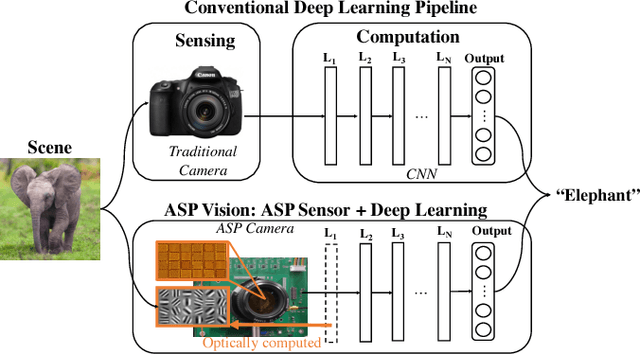
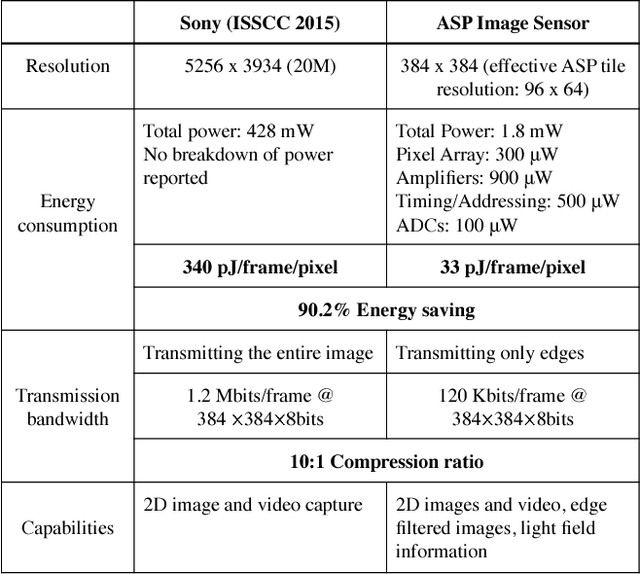
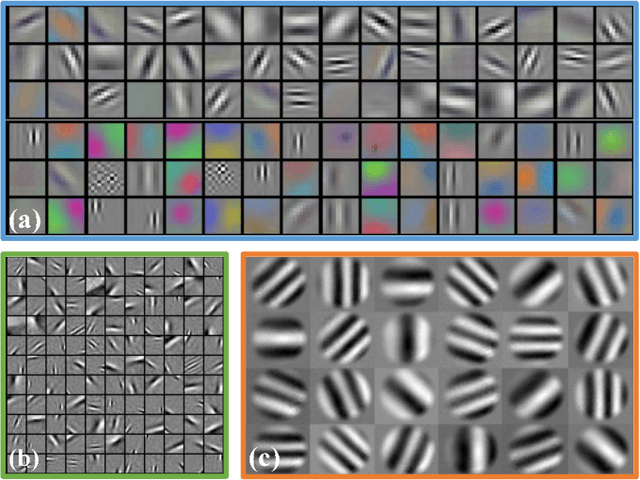

Abstract:Deep learning using convolutional neural networks (CNNs) is quickly becoming the state-of-the-art for challenging computer vision applications. However, deep learning's power consumption and bandwidth requirements currently limit its application in embedded and mobile systems with tight energy budgets. In this paper, we explore the energy savings of optically computing the first layer of CNNs. To do so, we utilize bio-inspired Angle Sensitive Pixels (ASPs), custom CMOS diffractive image sensors which act similar to Gabor filter banks in the V1 layer of the human visual cortex. ASPs replace both image sensing and the first layer of a conventional CNN by directly performing optical edge filtering, saving sensing energy, data bandwidth, and CNN FLOPS to compute. Our experimental results (both on synthetic data and a hardware prototype) for a variety of vision tasks such as digit recognition, object recognition, and face identification demonstrate using ASPs while achieving similar performance compared to traditional deep learning pipelines.
Depth Fields: Extending Light Field Techniques to Time-of-Flight Imaging
Sep 02, 2015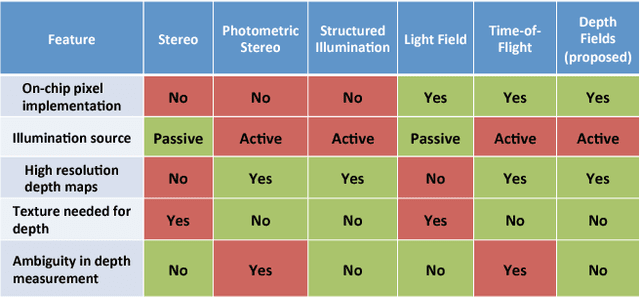

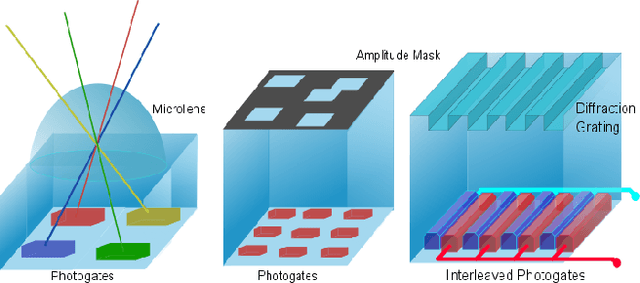
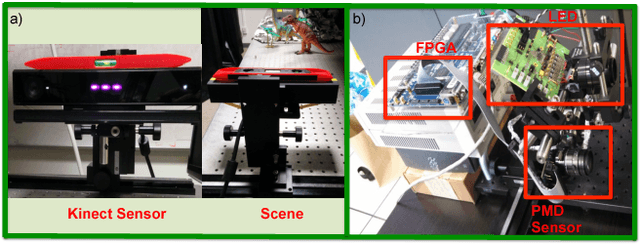
Abstract:A variety of techniques such as light field, structured illumination, and time-of-flight (TOF) are commonly used for depth acquisition in consumer imaging, robotics and many other applications. Unfortunately, each technique suffers from its individual limitations preventing robust depth sensing. In this paper, we explore the strengths and weaknesses of combining light field and time-of-flight imaging, particularly the feasibility of an on-chip implementation as a single hybrid depth sensor. We refer to this combination as depth field imaging. Depth fields combine light field advantages such as synthetic aperture refocusing with TOF imaging advantages such as high depth resolution and coded signal processing to resolve multipath interference. We show applications including synthesizing virtual apertures for TOF imaging, improved depth mapping through partial and scattering occluders, and single frequency TOF phase unwrapping. Utilizing space, angle, and temporal coding, depth fields can improve depth sensing in the wild and generate new insights into the dimensions of light's plenoptic function.
 Add to Chrome
Add to Chrome Add to Firefox
Add to Firefox Add to Edge
Add to Edge